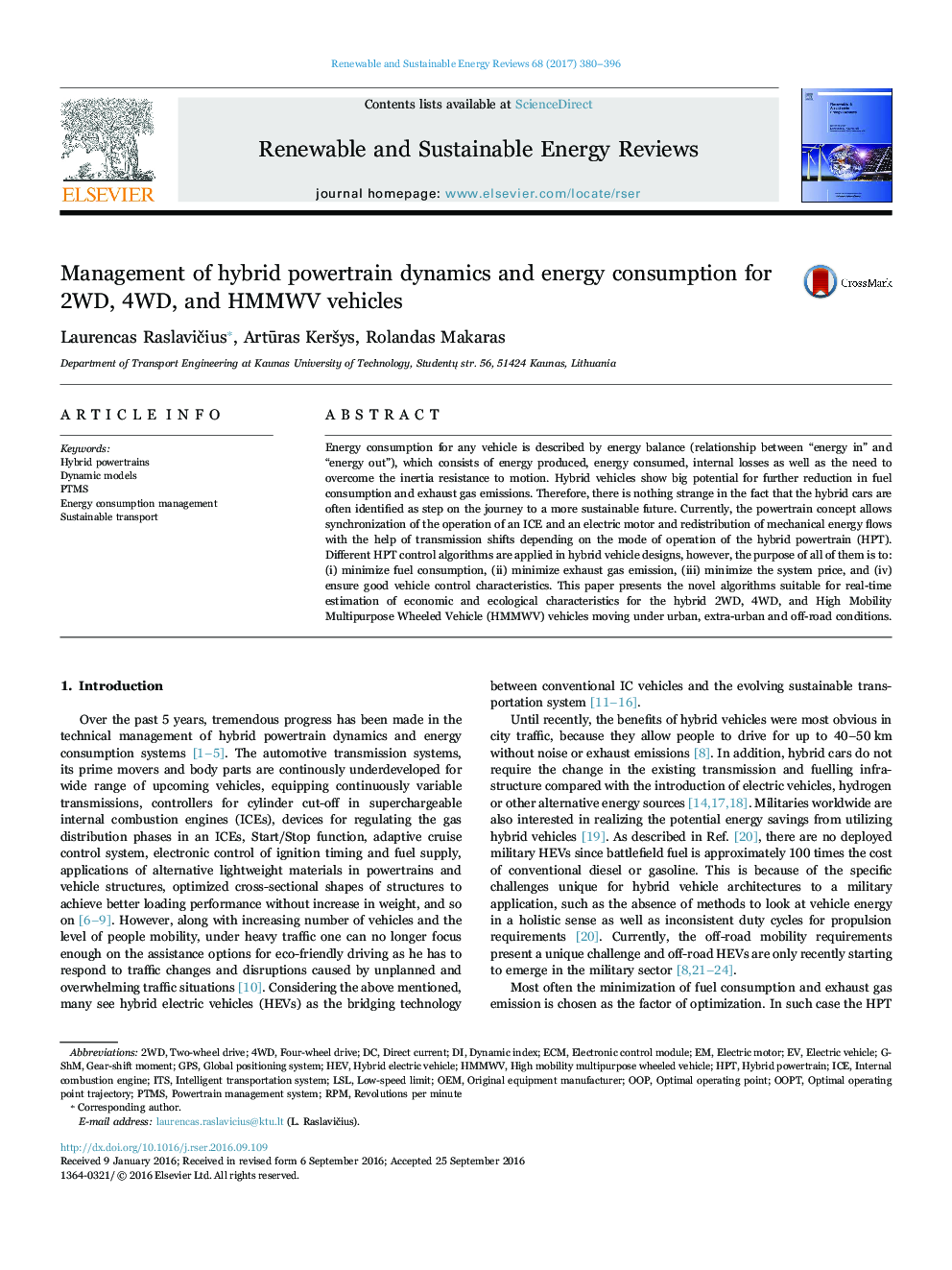| Article ID | Journal | Published Year | Pages | File Type |
|---|---|---|---|---|
| 5482679 | Renewable and Sustainable Energy Reviews | 2017 | 17 Pages |
Abstract
Energy consumption for any vehicle is described by energy balance (relationship between “energy in” and “energy out”), which consists of energy produced, energy consumed, internal losses as well as the need to overcome the inertia resistance to motion. Hybrid vehicles show big potential for further reduction in fuel consumption and exhaust gas emissions. Therefore, there is nothing strange in the fact that the hybrid cars are often identified as step on the journey to a more sustainable future. Currently, the powertrain concept allows synchronization of the operation of an ICE and an electric motor and redistribution of mechanical energy flows with the help of transmission shifts depending on the mode of operation of the hybrid powertrain (HPT). Different HPT control algorithms are applied in hybrid vehicle designs, however, the purpose of all of them is to: (i) minimize fuel consumption, (ii) minimize exhaust gas emission, (iii) minimize the system price, and (iv) ensure good vehicle control characteristics. This paper presents the novel algorithms suitable for real-time estimation of economic and ecological characteristics for the hybrid 2WD, 4WD, and High Mobility Multipurpose Wheeled Vehicle (HMMWV) vehicles moving under urban, extra-urban and off-road conditions.
Keywords
ECMITSRPM4WDOptimal operating pointHEVPTMsLSLhptOOPDC, Direct currentsustainable transportHybrid electric vehicleElectric Vehicleoriginal equipment manufacturerGPSrevolutions per minuteintelligent transportation systemGlobal Positioning SystemDynamic indexDynamic modelselectric motorinternal combustion engineOEMHybrid powertrainIce
Related Topics
Physical Sciences and Engineering
Energy
Renewable Energy, Sustainability and the Environment
Authors
Laurencas RaslaviÄius, ArtÅ«ras KerÅ¡ys, Rolandas Makaras,
